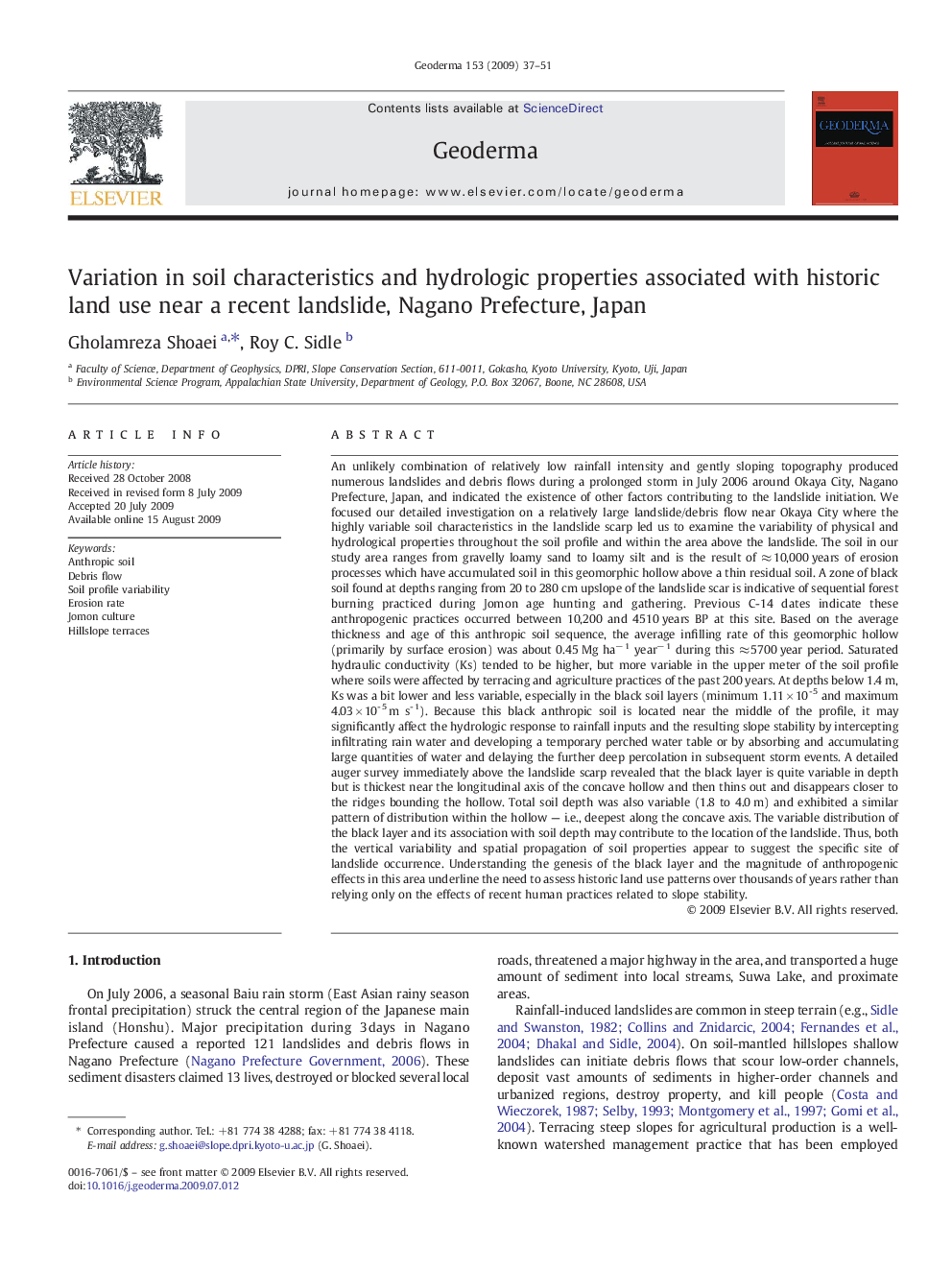| کد مقاله | کد نشریه | سال انتشار | مقاله انگلیسی | نسخه تمام متن |
|---|---|---|---|---|
| 4574288 | 1629528 | 2009 | 15 صفحه PDF | دانلود رایگان |

An unlikely combination of relatively low rainfall intensity and gently sloping topography produced numerous landslides and debris flows during a prolonged storm in July 2006 around Okaya City, Nagano Prefecture, Japan, and indicated the existence of other factors contributing to the landslide initiation. We focused our detailed investigation on a relatively large landslide/debris flow near Okaya City where the highly variable soil characteristics in the landslide scarp led us to examine the variability of physical and hydrological properties throughout the soil profile and within the area above the landslide. The soil in our study area ranges from gravelly loamy sand to loamy silt and is the result of ≈ 10,000 years of erosion processes which have accumulated soil in this geomorphic hollow above a thin residual soil. A zone of black soil found at depths ranging from 20 to 280 cm upslope of the landslide scar is indicative of sequential forest burning practiced during Jomon age hunting and gathering. Previous C-14 dates indicate these anthropogenic practices occurred between 10,200 and 4510 years BP at this site. Based on the average thickness and age of this anthropic soil sequence, the average infilling rate of this geomorphic hollow (primarily by surface erosion) was about 0.45 Mg ha− 1 year− 1 during this ≈ 5700 year period. Saturated hydraulic conductivity (Ks) tended to be higher, but more variable in the upper meter of the soil profile where soils were affected by terracing and agriculture practices of the past 200 years. At depths below 1.4 m, Ks was a bit lower and less variable, especially in the black soil layers (minimum 1.11 × 10- 5 and maximum 4.03 × 10- 5 m s- 1). Because this black anthropic soil is located near the middle of the profile, it may significantly affect the hydrologic response to rainfall inputs and the resulting slope stability by intercepting infiltrating rain water and developing a temporary perched water table or by absorbing and accumulating large quantities of water and delaying the further deep percolation in subsequent storm events. A detailed auger survey immediately above the landslide scarp revealed that the black layer is quite variable in depth but is thickest near the longitudinal axis of the concave hollow and then thins out and disappears closer to the ridges bounding the hollow. Total soil depth was also variable (1.8 to 4.0 m) and exhibited a similar pattern of distribution within the hollow — i.e., deepest along the concave axis. The variable distribution of the black layer and its association with soil depth may contribute to the location of the landslide. Thus, both the vertical variability and spatial propagation of soil properties appear to suggest the specific site of landslide occurrence. Understanding the genesis of the black layer and the magnitude of anthropogenic effects in this area underline the need to assess historic land use patterns over thousands of years rather than relying only on the effects of recent human practices related to slope stability.
Journal: Geoderma - Volume 153, Issues 1–2, 15 October 2009, Pages 37–51